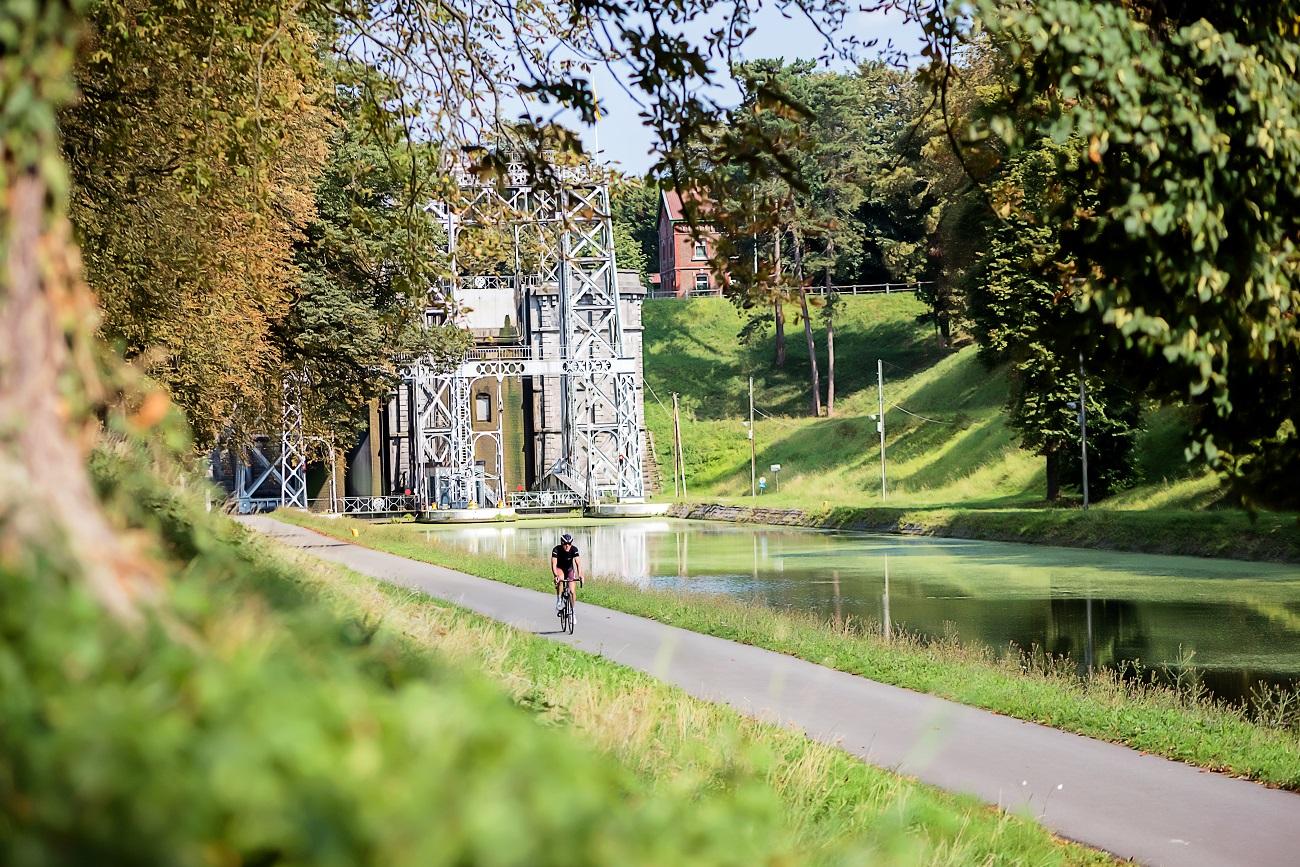Hydraulic boatlifts of the historical Canal of the Centre
B-7110 Houdeng-Aimeries (La Louvière)

Between the twelve waterways in Hainaut, the Centre Canal is proving to be the one whose international reputation is the most impressive, especially thanks to its exceptional works of art!
The construction of this waterway realized during the period of the Industrial Revolution in the late 19th century, took place in several stages. The goal was to connect the different coal basins of Hainaut with those implanted in Flanders and in the north of France to respond the great economic need of the region of the Centre: the circulation of coal. Its impact was considerable and allowed to attract many industries in the region of the Centre.
But the realization of the Canal du Centre did not occur easily, principaly because of the difference in height of 90 meters between the branches of the Centre in Houdeng and the valley of the Haine in Mons.
To avoid the construction of 17 locks, plans of 4 hydraulic elevators were developed in 1884. Work began the following year and in 1888, King Leopold II inaugurated the lift No. 1. This last makes up for a drop of 15.4 m. Its structure was completed in the Cockerill factories of Seraing, according to the plans of the English engineer Edwin Clark. A funny exhibition is also dedicated to him, "The fabulous Engineer Clark’s machine", in the oldest building of the site.
As for boatlifts n°2 (Houdeng-Aimeries), n°3 (Bracquegnies) and n°4 (Thieu), they were edified 30 years after the first one. Each one makes up for a difference in height of 17 meters.
Eight boatlifts were constructed at the same period but today, only the four industrial monuments in the Hainaut, aged of more than a hundred years, are still working, with their old machineries. Since 2002, the use of these boatlifts has been limited to boating and tourist attraction. Boatlifts in the Hainaut are still present in the landscape and remain an exceptional testimony of the remarkable developments in hydraulic engineering of the 19th century in Europe. They will always stand out as the most amazing of hydraulic, industrial and architectural heritage of Belgium.
All these qualities led to the classification of those incredible monuments as World Heritage by the UNESCO in 1998.
Booking
Equipments/Services
- Cafeteria
- Parking
- Coach park
- Toilets
Sleeping nearby

